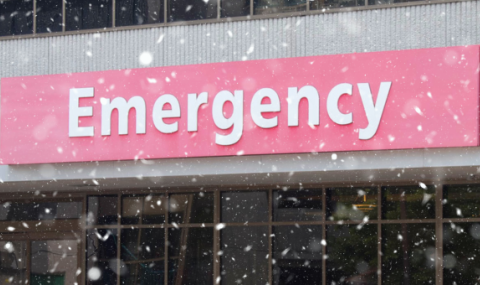Question
of the Week:
|
|
| Answer:
The 7th cranial nerve is the facial nerve. The main function of each of the two 7th cranial nerves is facial movement on the same side (ipsilateral). Left sided forehead wrinkle, left eyelid closure, and movement of the left half of the face is stimulated by the left 7th cranial nerve. Lacrimation (tearing) and salivation is also stimulated by the 7th cranial nerve. The 7th cranial nerve also has some sensory component including the sense of taste (anterior 2/3 of the tongue). Upper
and Lower Motor Nerve Facial Movement
Bell's Palsy, or a true left 7th cranial nerve paralysis causes paralysis of the entire left side of the face. This includes loss of the ability to wrinkle the left forehead on the affected side. Other symptoms include an inability to close the eyelid on the affected side, ipsilateral dryness of the eye (with risk for corneal ulceration), dryness of the mouth, and decreased sense of taste. Facial paralysis can also occur as a result of damage to the cerebral cortex or motor nerves that carry the message to the 7th cranial nerve on the opposite side (upper motor neuron injury). Thus, right cerebral cortex injury prevents the left 7th cranial nerve from being stimulated, causing left sided facial weakness. Forehead wrinkle is the one clinical feature that can differentiate the cause of a facial weakness. The forehead receives duel innervation....one pathway from the right cerebral cortex and another from the left cerebral cortex. These messages then stimulate the 7th cranial nerve. If a left sided facial weakness is caused by an injury to the right cerebral cortex, the duel innervation of the forehead will result in facial weakness below the forehead, with preservation of bilateral forehead wrinkle. With facial weakness that is caused by a 7th cranial nerve injury, the weakness will extend to include the forehead on the affected side (making it look "ironed out" on the side of the 7th cranial nerve injury). Because of the close proximity to the 8th cranial nerve, balance and hearing should also be assessed when the 7th cranial nerve is damaged. |



